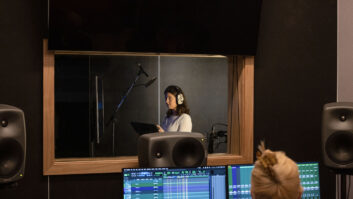The term asset management has nothing to do with media or video as such. Asset management is the notion that your items of value, mostly money or property, need to be managed to maintain or increase their value. This may sound trivial, but when using this terminology in conjunction with media and needs to be rammed home again and again.
Your media are your valuables. Treat them like you would treat your money or real estate.
An additional aspect particular to the media industry is cultural heritage. A lot of the media content produced and distributed forms local or global cultural heritage and therefore should be archived and maintained in the interests of the public.
For many customers asset management and archiving is the same. Some big silo of storage were to dump the media files. Agreeing with this notion is missing the point. Putting all media in one big storage “bucket” is only the start. An important starting point that when well executed is the foundation of a scalable, secure and future-proof solution.
In the past (or present) index cards, different sorts of labels, and sheets of paper stuffed into film cans, tape boxes or attached to portable hard drives hopefully combined with the accumulated knowledge of the librarian were (or are) the archive. Asset management systems grew out of the necessity to escape this chaos, replacing paper with a computer database. Media was not even digitised when this started over 40 years ago.
A lot has changed in the way we can interact with computers over the last decades and keeps changing with AI now being the key driver.
At the same time, the amount of media content being created has exploded, as has the number and type of distribution channels that require feeding – traditional TV channels, streaming services, social platforms, FAST channels and new, emerging platforms such as AR/VR.
Even more raw media content in a myriad of formats is being created with generative AI now adding to the mix with amazing advancements being made. It also brings a whole new set of problems.
Media asset management helps deal with this zoo. Format wrangling is a waste of time that adds nothing to the creative process, something woefully ignored by many production facilities.
The expectations are to turn around productions faster, and as always, of course, cheaper, while still creating good-looking product. This is impossible to scale without a good media asset management system at the core.
Good asset management depends upon rich and accurate metadata, and this is where things have traditionally gone wrong. Entering metadata is fundamentally a very dull job. Journalists who have found a great story, shot some interviews and explanations, then cut the package for the nightly news, want to move on to the next story, not sit and type in a bunch of keywords and information like when and where interviews took place.
The good news is that we can ask artificial intelligence to do all the grunt work on metadata today. Cameras deal with the location, date and time. Speech and object recognition fill in all the descriptive metadata. Refine your automated metadata generation by customising large language models to your needs.
Perhaps the most important thing to keep in mind is, that none of the possibilities that AI can bring to automating content creation workflows will work without being able to store and manage media metadata in a media asset management system.
The future of production is AI-driven or assisted with the ever-increasing pool of media being constantly mined for more metadata using the ever-improving AI technology.
Those who still want to be in this industry in the future need to be in control of their own destiny, their own assets. Relying on the kindness (for a fee) of some large tech companies to help mine your media assets will just allow them to train their AI models based on your assets for free, furthering the capabilities of their generative AI.
Generative AI is a legal grey area. If you cannot prove that the underlying models were trained on your own content alone, you open yourself up to potential lawsuits and copyright disputes.
This brings us back to one of the core values of any good media asset management system – to be able to point at any frame of video or picture and to be able to exactly determine where it came from and who owns it.







